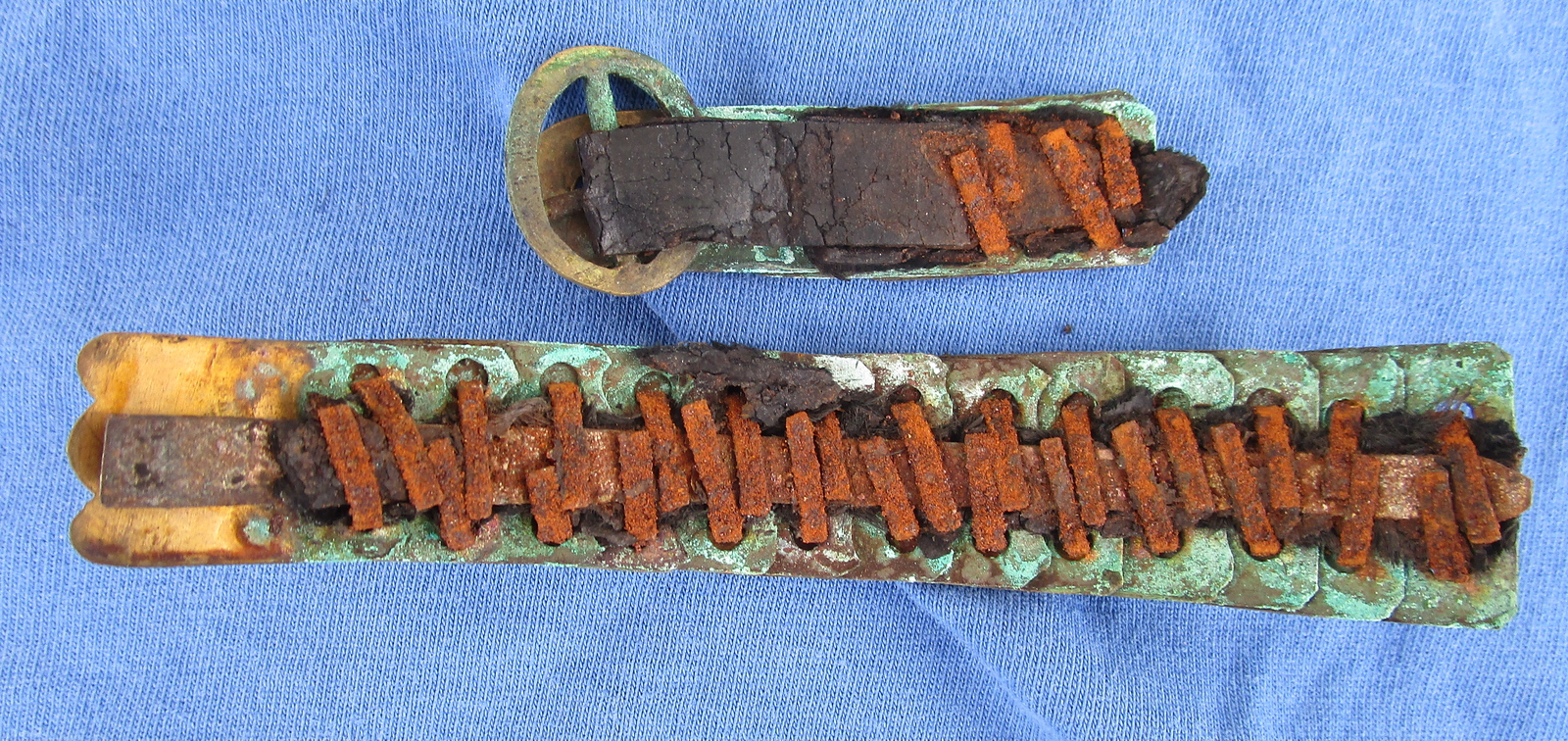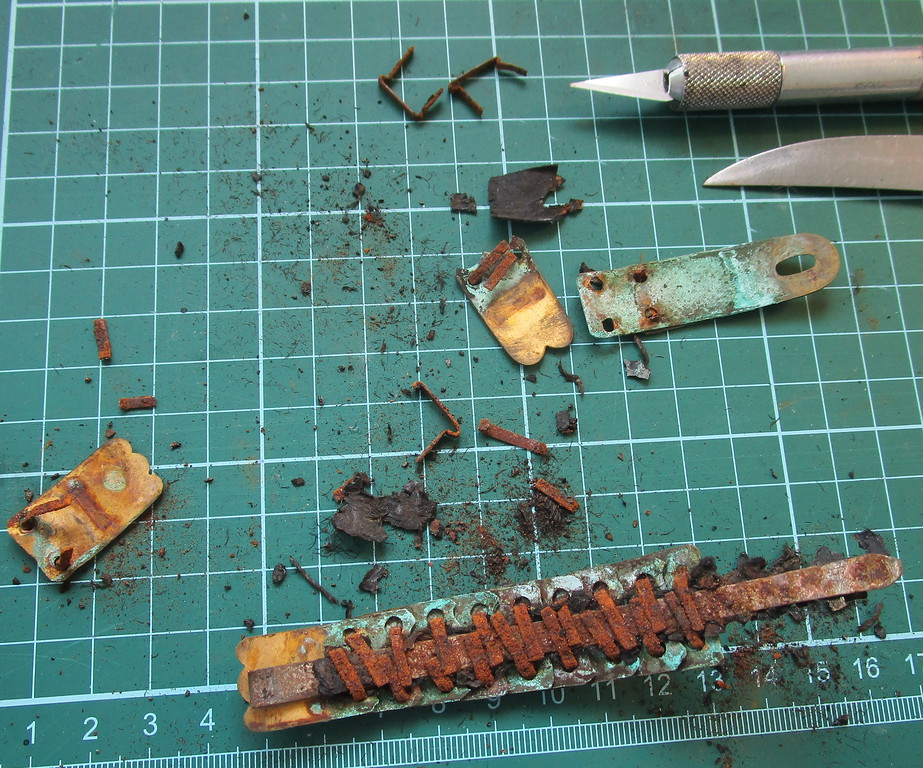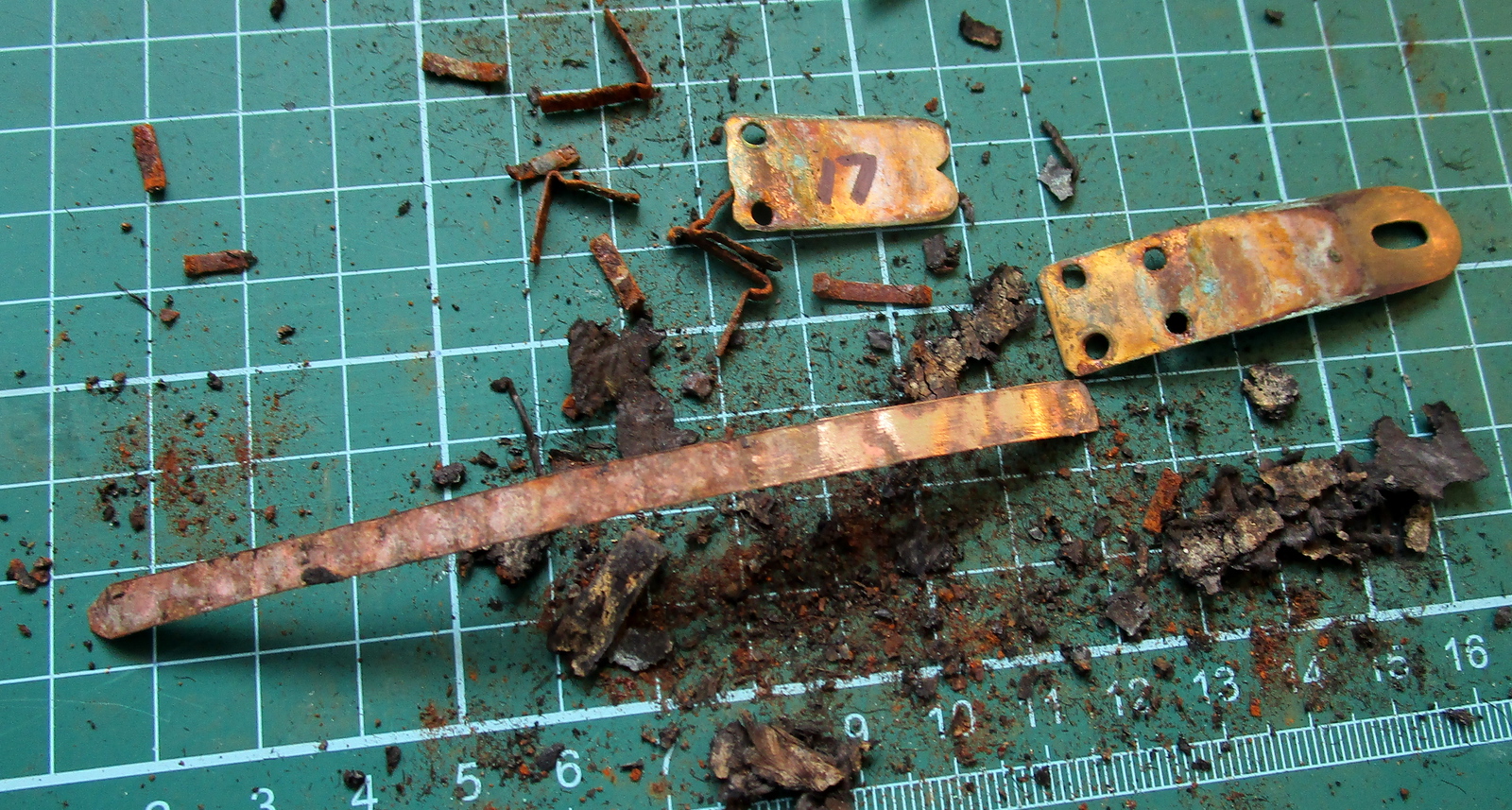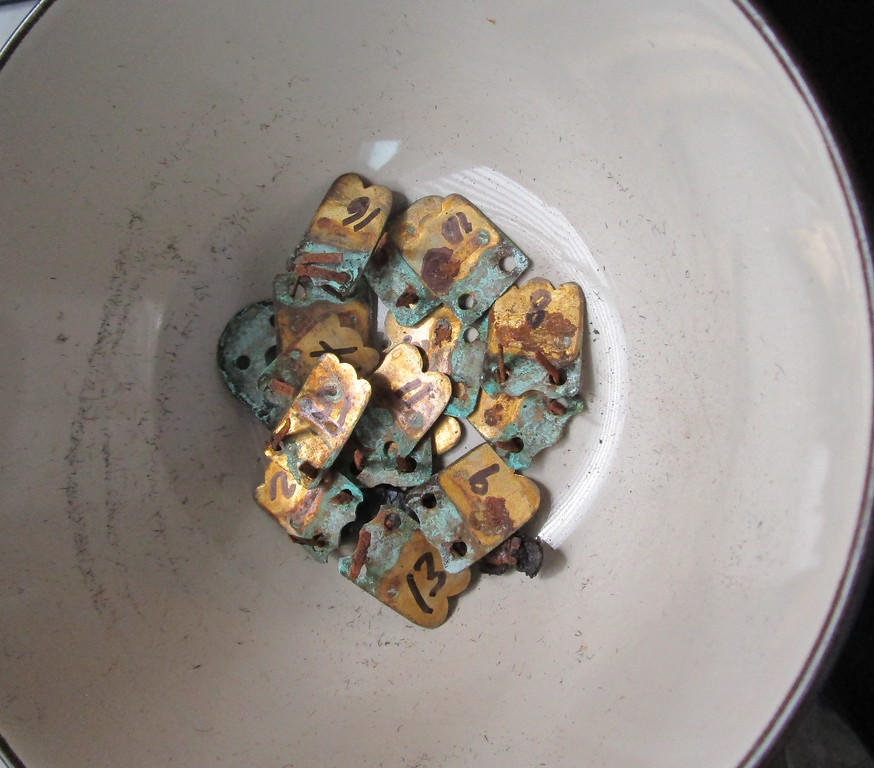James and Alan kept me busy over this "Covid Winter" by sending me 2 officer helmets and a tschapka to work on. James threw in 4 single chin scales to be rebuilt as well. I think they both just wanted to keep me semi safe at home....keep "the old guy" off the streets!  Anyway, 2 of the 4 single scales are of interest:
Anyway, 2 of the 4 single scales are of interest:
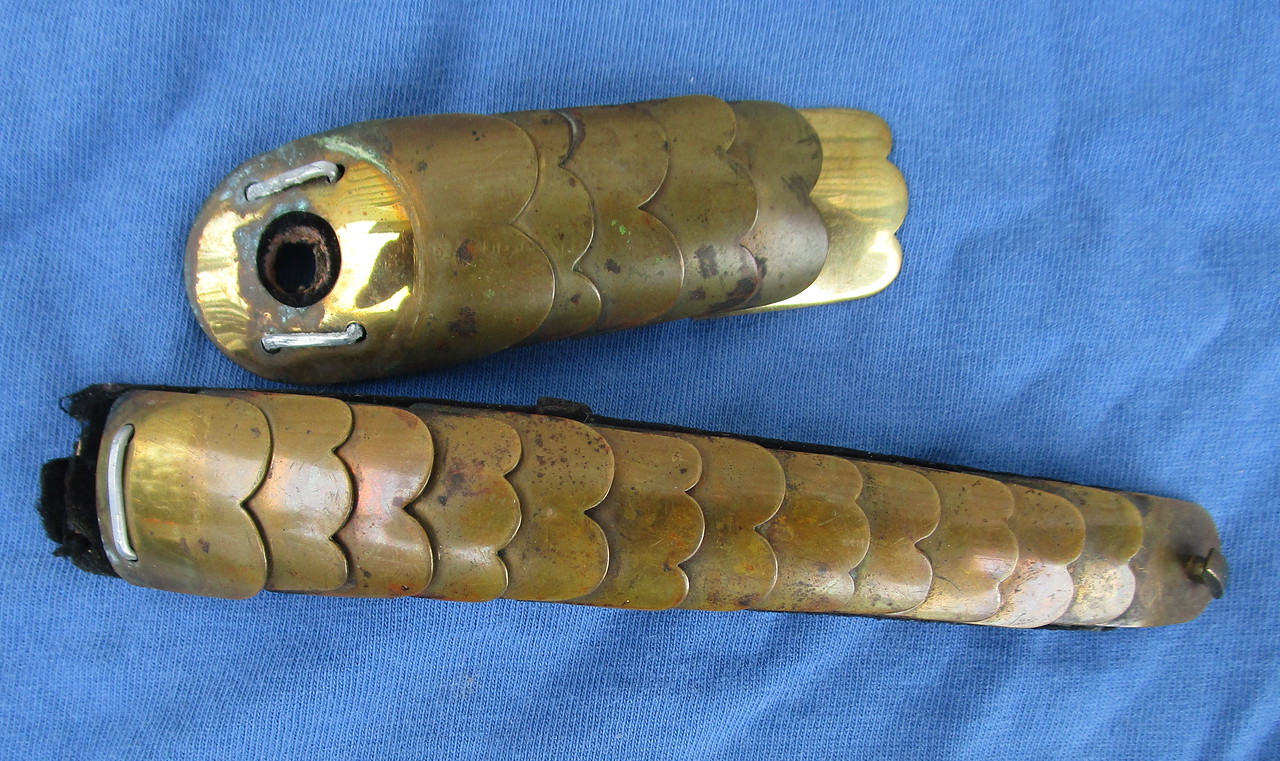
First, a typical broken convex "cavalry" style scale.
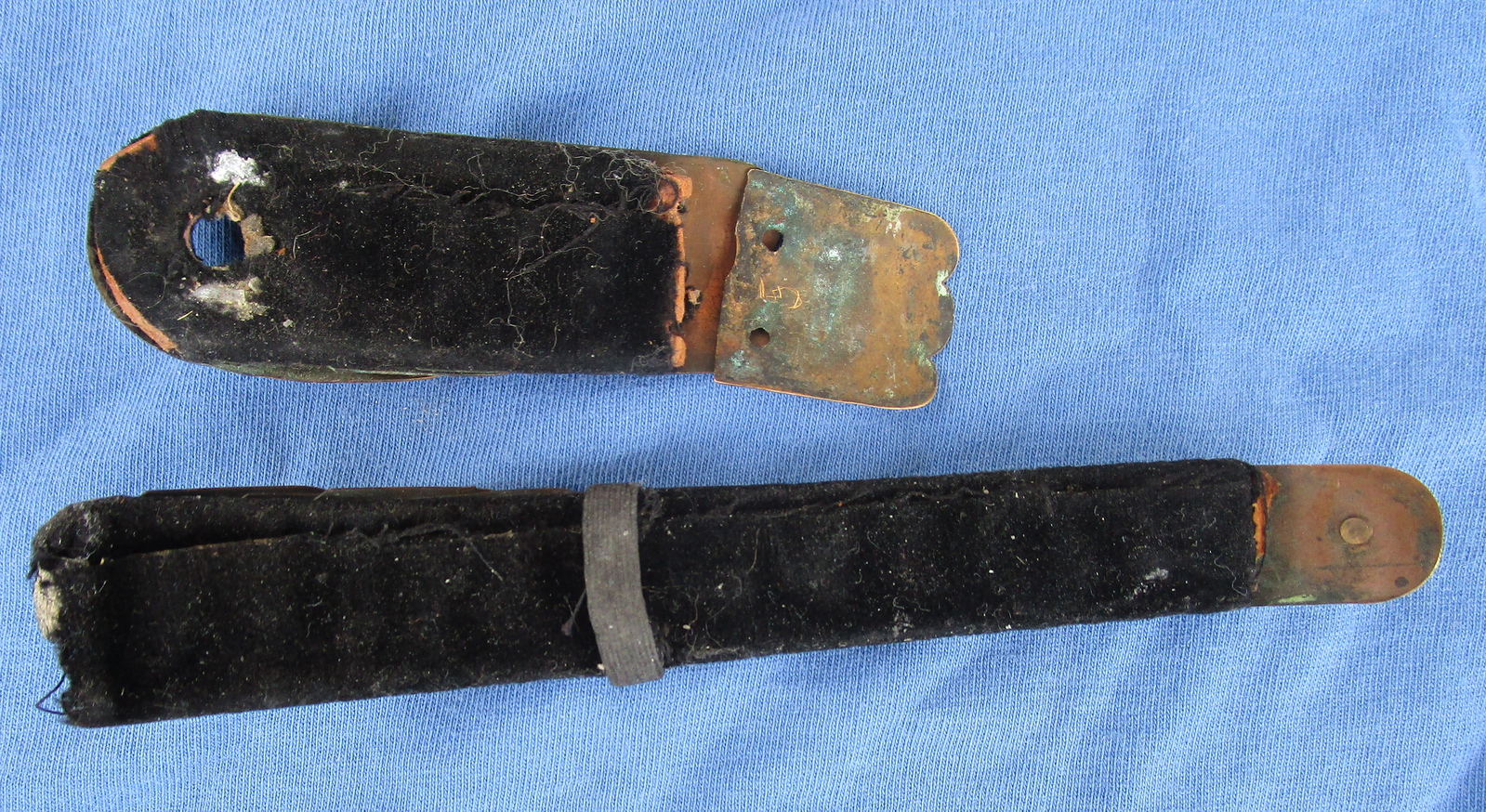
But....something I have never seen before, black velvet backing on the scale!! This is part of a set as James kept the unbroken one. After my initial surprise...I got to thinking....I have known James for over a decade, yea I could see him as a "Black Velvet" type of guy!
This is part of a set as James kept the unbroken one. After my initial surprise...I got to thinking....I have known James for over a decade, yea I could see him as a "Black Velvet" type of guy! 
 Now that I have had my fun, has anyone else seen this before?? :???:
Now that I have had my fun, has anyone else seen this before?? :???:
Next another broken Le Brasseur scale, flat infantry:
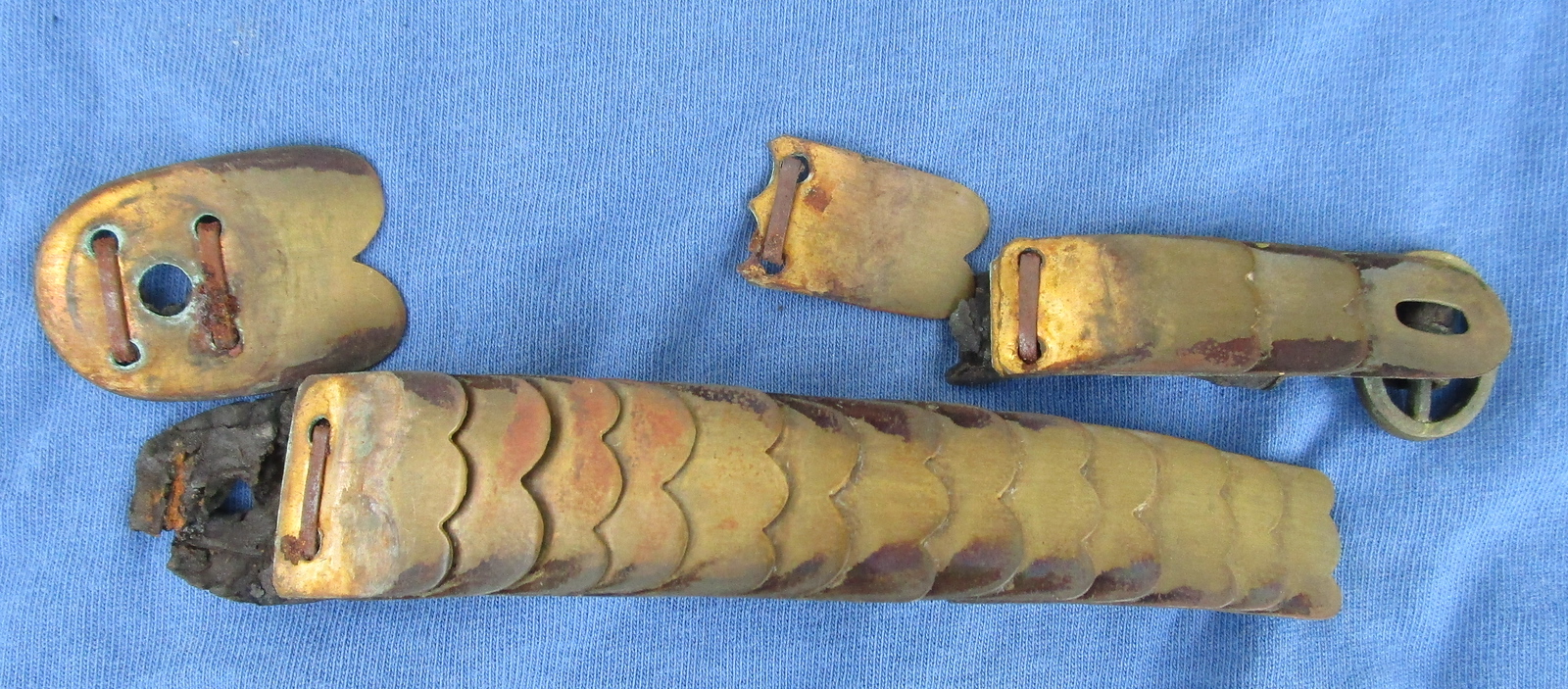
A bit narrower than most but still a nice example. The oval buckle, I have seen before but the square buckle is more common to Imperial officer scales.
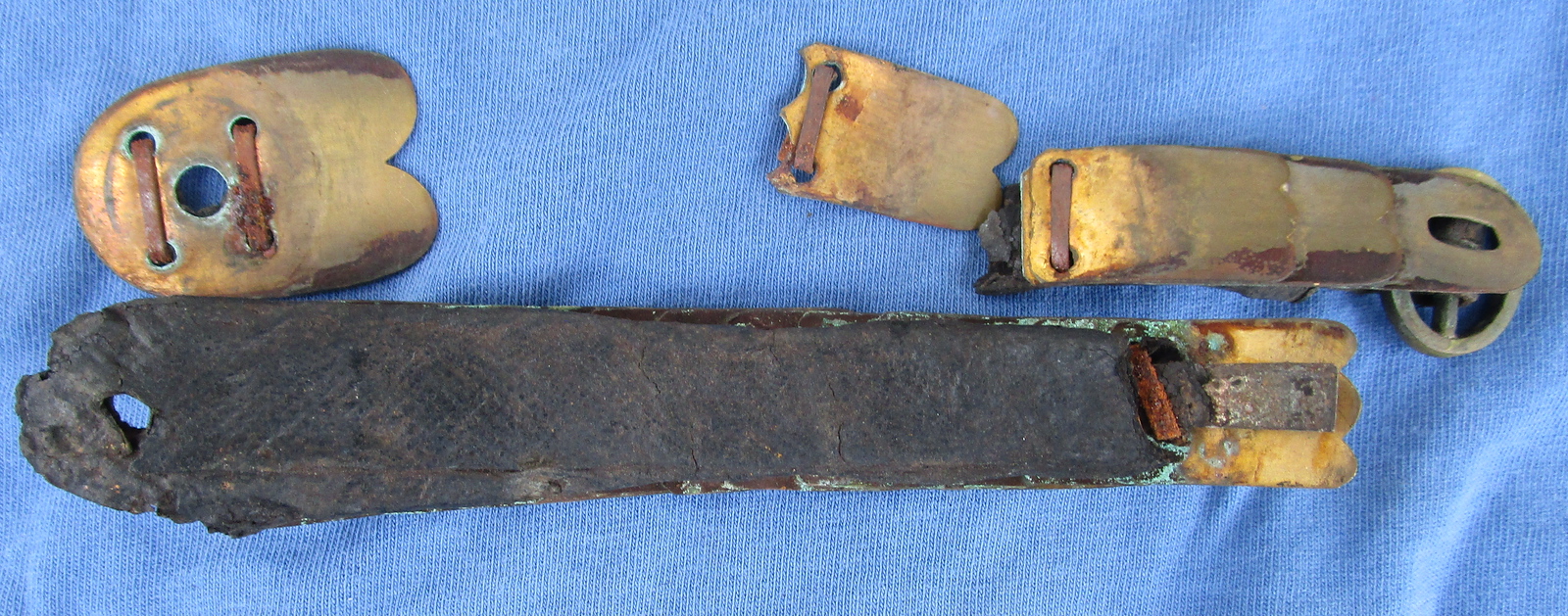
But a new twist shown on the reverse side...a narrow metal backing strip! Now, I have seen this before where collectors have tried to repair breaks with thread, glued brass strips, tape etc. However, never this, the rusted staple over the corroded thin metal strip suggests, that this is original manufacture. We shall see as obviously, I am going to take this apart. Last, this infantry scale comes off a Wurtt. officer helmet in James's collection.
Now, I have seen this before where collectors have tried to repair breaks with thread, glued brass strips, tape etc. However, never this, the rusted staple over the corroded thin metal strip suggests, that this is original manufacture. We shall see as obviously, I am going to take this apart. Last, this infantry scale comes off a Wurtt. officer helmet in James's collection.
The "black velvet" scale also poses a problem.....can I get the original velvet (glued) off of the fiber backing strip? :? Or, do I replace with modern "black velvet"??? As usual James causes me problems! . I tried to relieve my covid stress for several weeks, as well as the pressure from Minnesota, by erroneously telling James that I had "lost" these two scales during a" trip to Walmart" BUT he refused to believe this for some reason :lol: To be continued. :thumb up:
. I tried to relieve my covid stress for several weeks, as well as the pressure from Minnesota, by erroneously telling James that I had "lost" these two scales during a" trip to Walmart" BUT he refused to believe this for some reason :lol: To be continued. :thumb up:

First, a typical broken convex "cavalry" style scale.

But....something I have never seen before, black velvet backing on the scale!!
Next another broken Le Brasseur scale, flat infantry:

A bit narrower than most but still a nice example. The oval buckle, I have seen before but the square buckle is more common to Imperial officer scales.

But a new twist shown on the reverse side...a narrow metal backing strip!
The "black velvet" scale also poses a problem.....can I get the original velvet (glued) off of the fiber backing strip? :? Or, do I replace with modern "black velvet"??? As usual James causes me problems!


